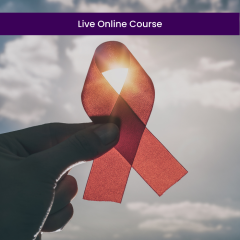Substance Misuse Prevention for Young Adults: An Evidence-based Resource Guide (3 CE)
Course Level: Intermediate
This course is for: Social Workers, Psychologists, Counselors, Marriage & Family Therapists, and Addiction Counselors
Course By: Helen Hinton, LPCC
Content By: Substance Abuse and Mental Health Services Administration (SAMHSA): Substance Misuse Prevention for Young Adults. Publication No. PEP19-PL-Guide-1 Rockville, MD: National Mental Health and Substance Use Policy Laboratory. Substance Abuse and Mental Health Services Administration, 2019.
Course Description: According to the 2018 National Survey on Drug Use and Health, over a third of young adults aged 18-25 engaged in binge drinking in the last month, and slightly over 38% used illicit drugs within the last year. When compared to other age groups, young adults have some of the highest levels of alcohol and substance misuse. This course uses a social-ecological perspective to illustrate the variety of developmental and contextual factors that place a young adult at risk for substance misuse. Identifying risk factors, as well as examining factors that prevent misuse, serves as the foundation for the development of evidence-based prevention practices and programs. The Substance Abuse and Mental Health Services Administration (SAMHSA)’s evidence-based prevention practices reviewed in this course targets universal, selected, and indicated populations at risk for substance misuse or substance use disorder.
Learning Objectives:
- Describe the prevalence, patterns, and trends of substance misuse among young adults.
- List the developmental and contextual factors that place young adults at risk for substance misuse.
- Identify protective factors that serve to mitigate substance misuse for young adults.
- Recognize vulnerable population groups at risk for substance misuse, as well as those at risk for developing Substance Use Disorder.
- Differentiate between evidence-based programs implemented in childhood and adolescence and those designed for young adults.
- Discuss how the steps of the Strategic Prevention Framework can be used as a guide for the implementation of evidence-based programs and practices.
Course Outline:
- Prevention of substance misuse among young adults
- Risk factors and protective factors targeted in prevention programs and practices
- Examples of seven evidence-based prevention programs and practices
- Steps for the Strategic Prevention Framework are presented as a guide for the selection and implementation of prevention programs and practices
- Resources for evaluation and quality improvement guidance
Approvals:
| Board Approvals | American Psychological Association (APA), Association of Social Work Boards (ASWB), NBCC, Florida Board - Social Work, MFT, Counseling, and Psychology, NYSED - Social Work, MFT and Counseling Only, American Academy of Health Care Providers in the Addictive Disorders |
|---|---|
| CE Format | Online, Text-Based |







